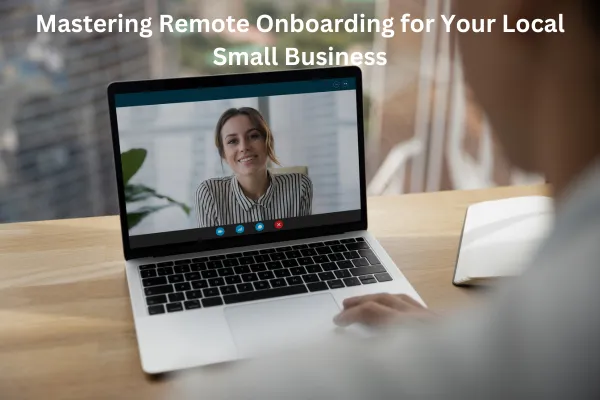
Unlock the Secret to 2x your Business through the 5 A's of Actualization
While working less hours and loving your life!
You Can Have It All...
As a small business owner, you know the grind all too well. You excel in the marketplace, but you might wonder, can you have it all?
Thriving health, fulfilling relationships, robust finances, and a grounded sense of conviction alongside your business success?
I'm passionate about helping you achieve comprehensive success—where personal accomplishment and business achievement are one and the same.
You are capable of greatness in every pillar of life.
I'll guide you to not just grow your business, but also to navigate the path to a fulfilling life that honors your values and aspirations.
Let's redefine success, together.
It's time to have it all.

Uncover How To Double Your Business,
Work Less, and Love Your Life
I'm Dr. G, and I've been helping people like you excel not just in business but in all aspects of life.
Now, I want to introduce you to the CEO Roadmap – a straightforward program designed to enhance your life, both professionally and personally, every single day.
Let's start this journey together and steer your life toward unparalleled success.
Best of all... it's free!
GET THE CEO ROADMAP
Free For a Limited Time
Dr. Pursley is an incredible speaker and coach. He is truly passionate about helping others to live their best lives and it shows. I have gained so much knowledge that has been extremely helpful in developing my business. Thanks Dr. G! -Julian W.

I met Dr. G at 10 X Growth con and knew he could help me right away. He helped me get in front of the right clients which helped me land multiple contracts worth over 300k in the first 3 months.

There are a lot of personal growth programs on the market, but Dr. Pursley has a sincere way of connecting with people, meeting them where they are, and helping them achieve their goals. Working with Dr. G is a wonderful experience... -Austin B

He has an amazing willingness to learn about me and my situation. He has been willing to share with me how he became successful, what to watch out for, and the path that he is currently on to do bigger and better things. -Kweku A

As Seen On...






Amplify Your Life's Journey with Insights from the Dr. Greg Consulting Podcast
If you're seeking conversations that reach the heart of personal growth and unearthing your truest potential, tune into the Dr. Greg Consulting podcast.
Available on Apple, YouTube, and Spotify.
Join us weekly as we explore the essential ingredients for peak performance with guests who are not just excelling but transforming the very standards of success.

Hey, I'm Greg Pursley AKA Dr. G
In 2008, life threw a curveball:
our son’s rare dwarfism diagnosis.
As his health battles consumed us, I mistakenly believed the key to our salvation lay in earning more—working endlessly, chasing financial relief.
This relentless pursuit cost me dearly, sidelining my health, straining my marriage, and shaking my faith.
Only when I faced the harsh reality—that self-neglect was crippling, not aiding, my family—did I resolve to redefine my priorities.
From these trying times, "Dr. Greg Consulting" emerged, capturing the essence of personal restoration, proving that wealth isn't just about money, but about cultivating a rich, balanced life.

Mastering Remote Onboarding for Small Business Success
Mastering Remote Onboarding for Small Business Success
Introduction: A First-Day Tale of Two Hires
Imagine Sarah, who's thrilled about her new job but enters her first day with trembling hands, not knowing what awaits. She finds herself in a bustling small office where everyone seems too caught up to guide her. She's handed a stack of papers, pointed towards an empty desk, and told, "We'll train you when we can." The underlying message is clear — "Figure it out as you go."
Contrast that with James, who received a warm pre-boarding email from his new employer, a detailed itinerary for the first week, and access to the company’s online resources. Before he even steps foot on-site, he feels informed and connected. His first day starts with a team video call where friendly faces welcome him. By the time James walks into the office, he's not just ready to work; he's a part of the team.
These stories exemplify the stark differences in onboarding experiences. For small business owners, creating a standout remote onboarding process like James's is not just lofty ambition; it's achievable and essential. It ensures that when your new hires come on-site, they're not sidelined by uncertainty but empowered to leap into their roles confidently.
In this guide, we're going to help you rethink onboarding. We'll provide practical steps and insightful tips to navigate the challenges and opportunities of remote onboarding. This isn't just about keeping up with trends; it's about harnessing the power of thoughtful initiation to set your employees and business up for enduring success. So, let's embark on this journey to transform first-day jitters into first-day jubilation.

The Significance of Onboarding
The onboarding process is like laying down the blueprint for a new employee's success within a company. It's more than a formal welcome; it's an introduction to the company culture, a roadmap to a role's responsibilities, and a crucial phase that can cultivate commitment and contentment. Understanding the stakes involved, it's not surprising that the onboarding software market is burgeoning, with projections estimating its value to reach a staggering $1.35 billion by 2025. This number is a testament to the growing recognition of structured and streamlined onboarding—small business owners are now investing in technology that ensures every new hire has an equal footing from the outset.
But why the heavy emphasis on the process? When we peel back the layers, we uncover the high costs of employee disengagement. In the UK alone, the economy suffers a loss of approximately £340 billion ($408 billion) annually due to disengaged employees. This isn't a figure one can simply brush under the rug. It's a loud warning siren to businesses of all sizes that the wellbeing and engagement of employees have direct financial implications.
The often overlooked narrative in this context is how onboarding is perceived by the employees themselves. While over 93% of employers believe that onboarding plays a crucial role in an employee's decision to stay with the company, a survey by TeamStage reveals a staggering disconnect: only 12% of employees feel their organization does a good job with the onboarding program. This disparity highlights a common gap in the corporate world where strategies may fall short of addressing actual employee experiences and needs.
As a small business owner, you might be thinking, "What does this mean for me?" The data underscores the profound importance of investing in a robust onboarding process, especially as the nature of work shifts beneath our feet. With remote work becoming a staple, your onboarding process should bridge the gap between what onboarding traditionally looked like and what it can be: an engaging, inclusive, and informative experience that sets the tone for a productive and harmonious working relationship. Your employees are your biggest asset, and it's clear that the cost of neglecting their onboarding experience carries a price tag—both culturally and financially—that no business should be willing to pay.
Embracing Remote Onboarding – The Small Business Advantage
Remote onboarding might conjure images of global enterprises with employees scattered across continents, but it's just as relevant—if not more so—for the local small business owner looking to streamline and modernize their onboarding process. The relevance of remote onboarding in today's work environment cannot be overstated. As the landscape of work undergoes a fundamental shift, incorporating remote aspects into onboarding presents a strategic advantage for small businesses aiming to attract top talent and ensure a seamless transition for new hires.
Support during the onboarding process is crucial for remote hires. A surprising statistic reveals that only 39% of employees felt they received the right level of support when onboarded remotely, and an alarming 18% reported receiving no support at all. This glaring gap in onboarding support can lead to feelings of isolation and overwhelm, precisely what remote onboarding tools aim to eliminate.
Turning our attention to productivity, the conversation becomes particularly interesting. Data shows that employees working remotely are an astonishing 35% to 40% more productive than their in-office counterparts. This boost can be attributed to fewer distractions, the comfort of a personalized workspace, and, crucially, the freedom to dive into tasks without the typical first-day formalities—all made possible by thoughtful remote onboarding.
The connection between comprehensive remote onboarding and job satisfaction cannot be ignored. Employees who go through a well-orchestrated remote onboarding program are 18% more likely to report job satisfaction compared to those who do not. Job satisfaction is not a metric to be taken lightly; it directly impacts an employee's long-term commitment and performance.
So what does all this mean for the local small business owner? It's a clarion call to update and elevate your onboarding process by introducing remote elements. Remote onboarding technology now becomes an invaluable tool, allowing you to onboard new hires seamlessly with all the training and documentation completed before they set foot on-site. This ensures that when they do come in, they're not relegated to the back office to sift through paperwork or watch training videos—they're ready to engage fully, having already been woven into the fabric of your company's operations and culture.
In essence, by embracing remote onboarding practices, small businesses not only stand to benefit from increased productivity but also from higher employee satisfaction and retention rates. Remote onboarding is not just a trend; it's a strategic pivot that can set the stage for a thriving, responsive, and future-ready small business.
Tackling the Hurdles of Remote Onboarding for Small Businesses
Remote onboarding is revolutionizing how small business owners prepare their new hires for success. However, it also introduces the technological challenge of ensuring all recruits can access and engage with onboarding materials, regardless of their tech setup at home. Let's delve into this concern and explore practical, inclusive solutions that small businesses can employ.
Challenge: Ensuring Accessible Technology Setup
The first step of remote onboarding might be the most crucial: ensuring all new employees can easily access onboarding resources. Not all recruits may have the latest gadgets at home, but most have a smartphone.
Solution: Optimize your onboarding process for mobile access. Ensure that all documentation, training materials, and welcome packets are smartphone-friendly, as it's critical that your new team members can walk through the onboarding process comfortably, even on a smaller screen.
For those who may not have reliable internet access at home, guide them to local libraries or community centers where computers and high-speed internet are typically available for public use. This helps level the playing field and underscores your commitment to supporting your employees' needs right from the start.
Additionally, prepare a contingency plan for individuals facing technology barriers. This could include arranging for on-site sessions using company-owned devices or providing printed materials to guarantee that no new hire is left behind in the digital divide.
Challenge: Fostering Culture and Relationships Virtually
Cultivating a sense of belonging and team spirit without physical presence can be challenging when onboarding remotely.
Solution: Leverage technology to bridge the gap. A well-thought-out series of video introductions can give a sense of warmth and personal touch to the onboarding experience. Encourage existing team members to record welcome messages or offer video guides of company culture. Simple acts like virtual "meet and greets" using lightweight video conferencing tools can mimic those invaluable water cooler moments.
Challenge: Streamlining Virtual Communication
Transitioning all aspects of communication to a virtual realm can lead to potential disconnects without the non-verbal cues of in-person interactions.
Solution: Set up a standardized communication system that's smartphone-compatible, like a company-wide messaging app, and establish clear guidelines for its use. This can create a sense of immediacy and intimacy akin to popping by someone’s desk to say hello.
Challenge: Avoiding Information Overload
Start with a concise roadmap of what the first week should cover and support this plan with bite-sized learning modules and easily digestible content that new employees can process at their pace.
Solution: Small businesses should consider platforms that provide microlearning experiences, allowing new hires to consume information in manageable segments, which can be particularly effective for smartphone learning. Structured scheduling of learning segments can also help new team members pace themselves.
By acknowledging and creatively addressing these challenges, small business owners can create an inclusive and effective onboarding process that ensures every new hire, regardless of their technological circumstances, has the opportunity to seamlessly integrate into their team and hit the ground running.
Conclusion: Making Remote Onboarding Work for Your Small Business
Setting up a new employee for success is incredibly important. With a smart remote onboarding plan, small business owners can make sure new hires are ready to go even before they step through the door. Remember, you don't need fancy tech to make this happen. Using a smartphone, checking out a local library with internet, or having a backup plan can make sure everyone gets started on the right foot.
It's all about making things simple, personal, and clear for everyone—no matter where they are. This way, your team can grow stronger together, even when you're not all in the same place. And pretty soon, your new employees will be part of the action, helping your business do great things.
So, don't wait! Start using these tips today, and watch how remote onboarding can save time, make your team happier, and help your business shine.
Remote Onboarding Q&A for Local Small Businesses
Q1: What is remote onboarding, and why should my local small business consider it?
A: Remote onboarding is the process of getting new employees acquainted with their jobs and the company culture without physically being in the workplace. It's a good idea for small businesses to consider because it saves time, creates a smooth start for new hires, and makes sure no work time is lost. With folks using their smartphones or public computers, they can get up to speed quickly and start helping out right away.
Q2: How can I make sure my remote onboarding process is easy for everyone to use?
A: Keep things simple. Use videos, checklists, and other easy-to-follow materials that work well on smartphones or tablets. Test your process out to make sure it's user-friendly. And, always ask for feedback from new employees so you can make it even better.
Q3: What if a new employee doesn't have a computer or reliable internet at home?
A: No worries! You can guide them to use local resources like the library for free computer and internet access. Or, have a plan B with printed materials and in-person training when needed.
Q4: Can remote onboarding still help build our team culture?
A: Absolutely! You can create video welcomes from the team, organize meet-ups, and use chat apps to keep everyone connected. It's all about making each person feel like a part of the team, even from afar.
Q5: What are the first steps to set up a remote onboarding process for my small business?
A: Start by figuring out what a new person needs to know. Then, decide how you can share that info online or through a smartphone. Pick tools that are easy and cheap to use, like email, messaging apps, or free video chat services. From there, build a step-by-step plan for the first few days or weeks.
Q6: How do I know if my remote onboarding is successful?
A: Check in with your new hires to see how they feel about the process. Are they confused about anything? Do they feel welcome? Also, watch how quickly they can start working on their own. This will tell you a lot about how well your onboarding is working.
Remember, every small business is unique, so your remote onboarding might look different from someone else's, and that's okay! The goal is to make your new team members feel ready and excited to start working with you.

Privacy Policy
Terms and Conditions
Copyright 2025 Dr. Greg Pursley

Be a guest on the
Dr. Greg Consulting Podcast

Facebook
Instagram
X
LinkedIn
Youtube
TikTok